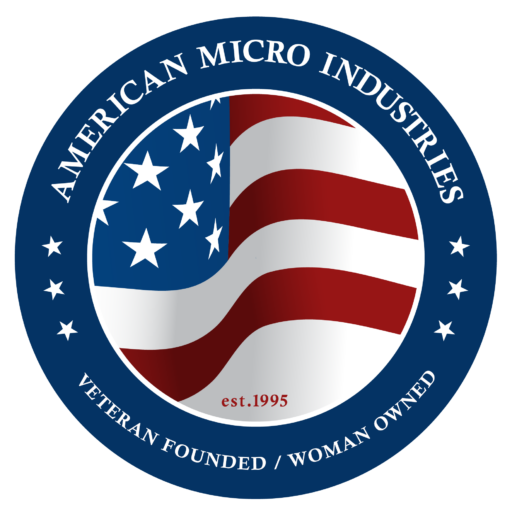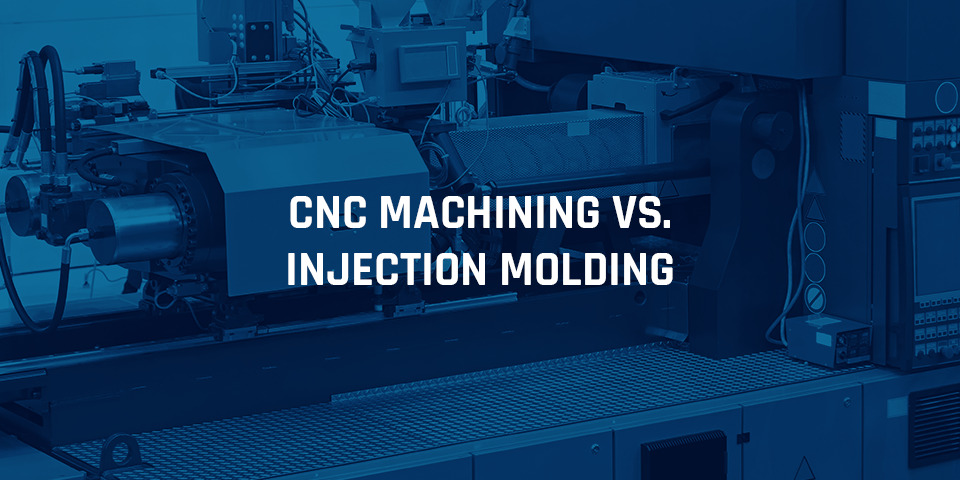


Two popular methods of parts production are CNC machining and plastic injection molding. Both methods are helpful for a wide array of industries, from healthcare to aeronautics, but they’re fundamentally different means of production from each other.
The method you should use ultimately depends on your project’s scope and specifications. Some key things to consider when choosing a production method are your project’s cost, materials and timeframe.
CNC stands for “Computer Numerical Control.” Essentially, CNC machining is a computer-controlled method of manufacturing parts using a Computer-Aided Drawing (CAD) file and a rotating lathe. It cuts away at the provided material to produce the desired shape.
It is similar to 3D printing in that it is computer-controlled. However, 3D printing is an additive process, adding material to a space where it did not already exist. CNC machining involves cutting away from a block of material that already exists.
Some typical applications for CNC machining include:
Injection molding produces parts by melting plastic materials and injecting them into a mold, also known as a “tool.” It first melts the plastic within the machine’s barrel, then injects it into a mold. The plastic hardens and cools within the mold, breaking apart to eject it, and the cycle begins again. Injection molds produce one product per machine cycle.
Molding is the opposite of CNC machining in that it involves filling an empty mold as opposed to cutting material away from an already-existing source.
Just like CNC machining, injection molding has applications in many industries. Some applications include:
Each method has its advantages and disadvantages. The production method you choose should depend on your project — which material you need to use, how much you expect the design to change and how soon you need your parts.
The most important differences between the two methods from a consumer’s view include the following:
Injection molding lead costs tend to be more expensive than CNC machining because you need a mold to produce your part. The mold cost depends on its complexity and size. Consider how many pieces you will need to make. Because injection molds can only create one part at a time, you may need to invest in several molds to meet your demand.
A CNC machine only needs a CAD file and block of material to begin a project, so the lead costs of CNC machining make it a more cost-effective alternative to injection molding.
If you need parts right away, CNC machining is your best bet. A machinist can create a CAD drawing within a few days and begin working upon completion, so your lead time will be fairly short. Once production begins, it is a quick process — cutting away from existing material takes less time than producing a whole new piece.
CNC machines can also work as an assembly line, with multiple machines producing each part. This function can significantly increase production speed, which is why CNC is an excellent choice for applications like short runs of parts or rapid prototype production.
Injection molding is a fast production method, but the long lead time means you will have to wait to get started. Producing a mold can take weeks or even months, depending on the design specifications. For that reason, injection molding is best for long-running lines of finalized products.
Injection molding is capable of handling enormous volumes of product at high speed for low costs. The most expensive part of injection molding is typically making the mold itself, but the price sharply decreases once you begin producing high quantities. CNC machining can also produce at a high volume, but it is often more cost-effective to make smaller batches using this method.
In general, injection molding makes more sense for product runs in the thousands and tens of thousands. CNC machining is more affordable for lower quantities of parts.
CNC machines can handle various materials, from metal alloys or wood to high-performance plastics and even wax. Injection molding is mainly limited to plastics and resins.
CNC machines are generally better able to produce using more rigid materials, like metals and hard plastics, due to the machine’s high heat tolerance. While CNC machines can cut into more pliable material, the risk of warping can be higher depending on the machining method used. For that reason, choose injection molding for plastic parts and soft, flexible materials like rubber.
Tolerance is the measure of a part’s deviation from standard measurements. There are multiple ways to express tolerance, but generally, machinists use the “+/-” symbol followed by the appropriate number. For example, if a machine’s tolerance is +/-0.001in, that means each cut of the finished product could be 0.001 inches larger or smaller than the given value in any direction.
There is no true standard for either CNC machining or injection molding since it can vary depending on the project. Manufacturers typically require customers to provide an acceptable tolerance before beginning production. If the customer does not give a number, the manufacturer might use an in-house standard.
CNC machining allows for tighter tolerance than injection molding, meaning measurements will be more consistently accurate. Tight tolerance is possible with injection molding, but it is more difficult to achieve.
Additionally, injection molding is more prone to imperfections than CNC machining due to mold structure. Molds consist of two separate pieces that close together during production, which can cause surface imperfections in some materials. The injector can also add air bubbles to the part, which can cause other flaws within the product. CNC machined parts can also experience imperfections, but you’re more likely to get a clean surface finish using this method.
CNC machining offers greater flexibility for changes in design than injection molding. If you need to change your part’s design, a machinist must alter the CAD file to meet your new specifications. This quick adjustment is especially helpful when creating custom parts or adjusting prototypes.
If you are using an injection mold, you need a whole new mold any time you change your product specifications. This kind of setback can be pricey and affect your timeline. Even though injection molding is incredibly fast, you may be sprinting to catch up after waiting for a new mold.
Do you need high-quality parts fast? AMI can help. Click here to learn more about our CNC machining services, or contact us for a free quote.